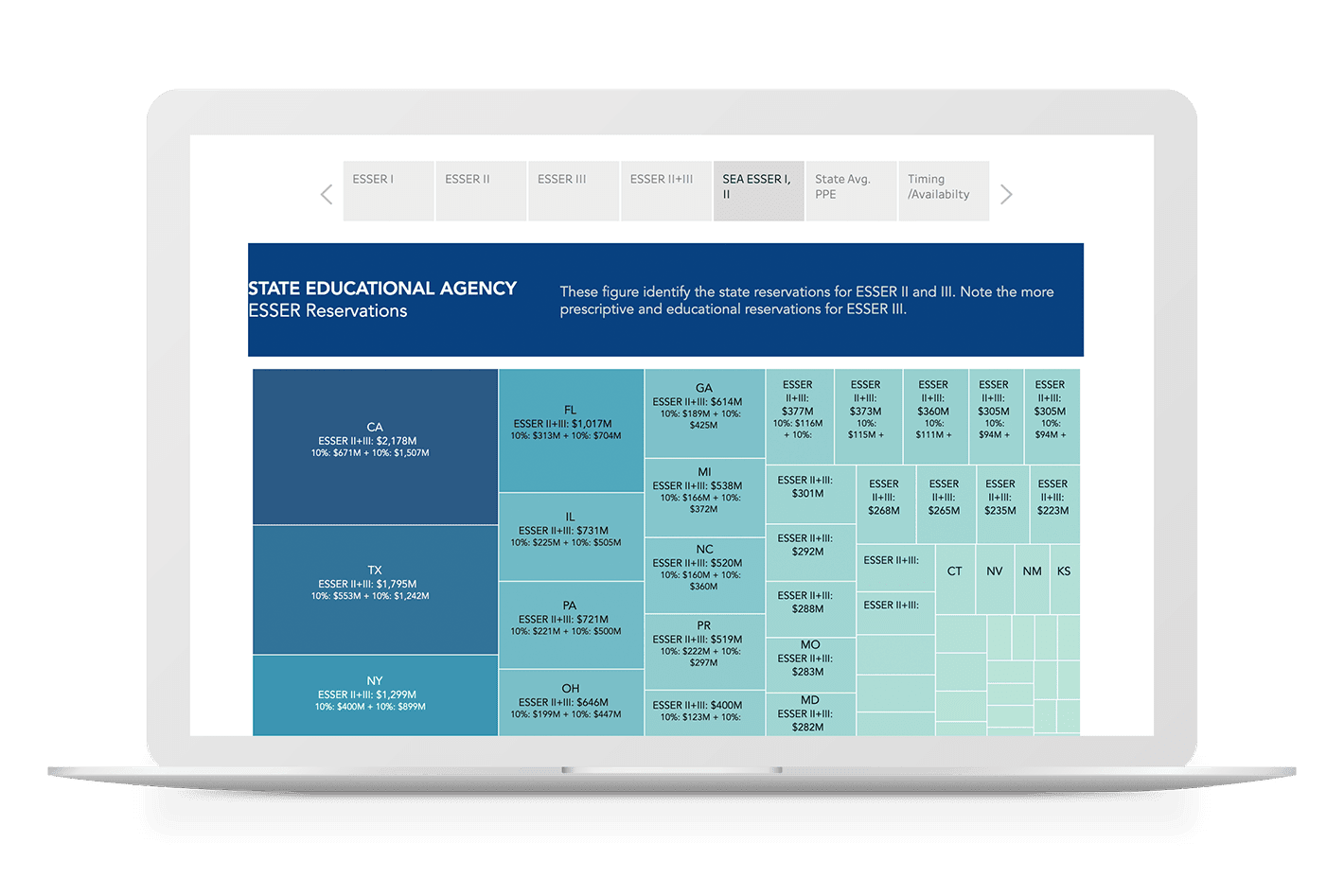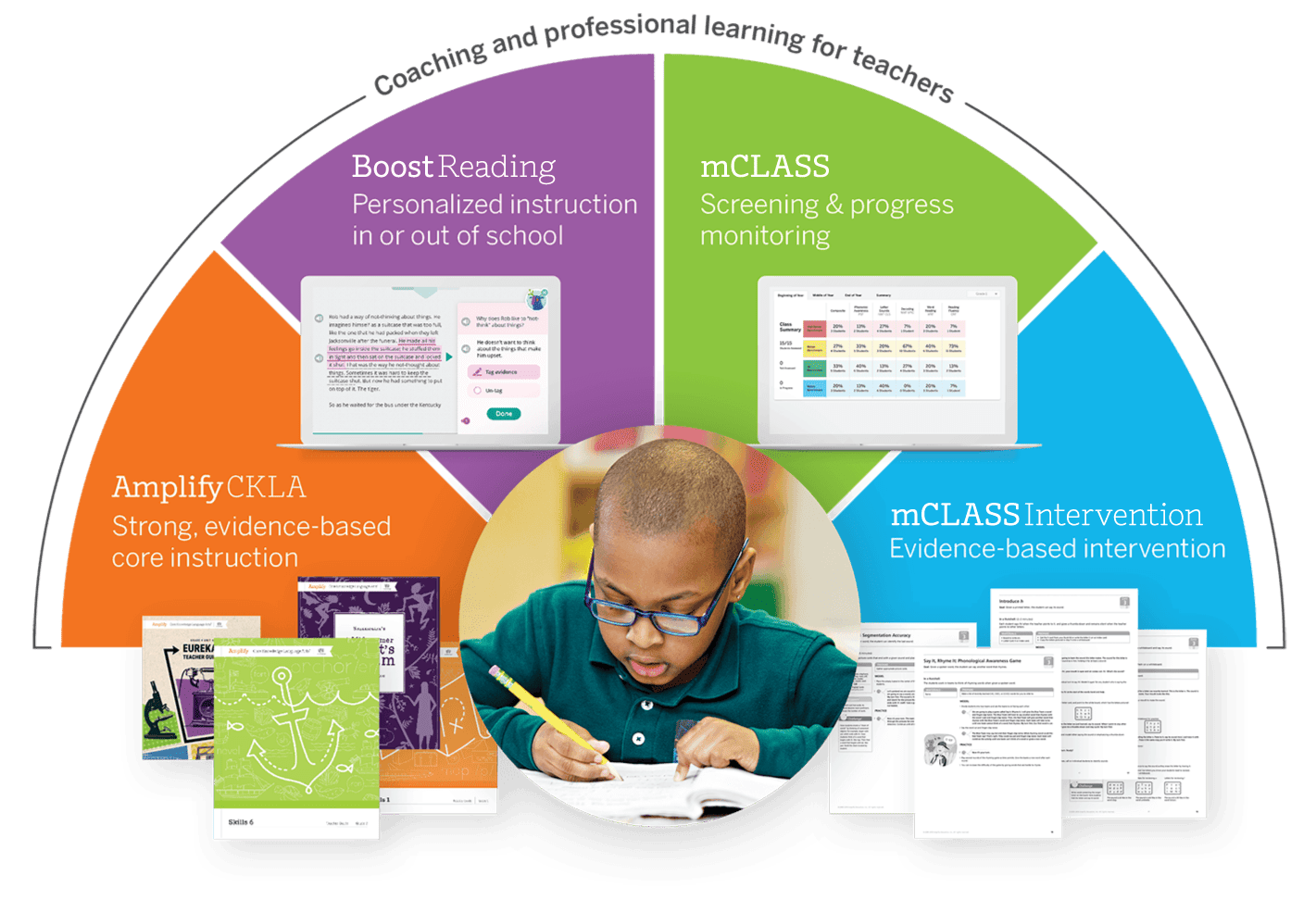Use stimulus funding to drive transformation.
Learn about ESSER I, II, and III funding (or CARES, CRRSA, and ARP), and how to use these funds to help with learning recovery and acceleration. Districts have significant flexibility in how to use the ESSER money, with ESSER II and III specifying that some of the funds should be used to address unfinished learning.
Given the enormous influx of resources flowing into KŌĆō12, now is the time to drive important, sustainable change in your district. All ČČę§│╔╚╦░µapp programs and services meet the criteria for the funding, and our early literacy suite can be particularly helpful in driving reading growth in grades KŌĆō5.

Where to start: Watch our stimulus funding overview.
Julia Gonzales, vice president of government relations at ČČę§│╔╚╦░µapp, walks you through what you need to know about federal stimulus funding.
Five fast facts
Here are the essential facts you need to know about the latest stimulus funding, also known as ESSER III or the American Rescue Plan (ARP).
- A large amount of money is coming to schools and districts. ESSER III┬Ā provides more money to KŌĆō12 education than any other stimulus bill: $122 billion. These funds come on top of the $67 billion from ESSER I and II.
- Schools and districts have a lot of leeway in how to use the money. ESSER III funds may be used to propel your vision of teaching and learning post-pandemic, so try to think about both short-term needs and your longer term ambitions for the district.
- At least 20 percent must be used to address unfinished learning. For example, schools and districts can use the funding to bolster the strength of in-school core instruction, differentiated practice, and intervention, as well as for summer learning, after school, and extended day activities.
- The money is available now. Act quickly! Schools and districts can access ESSER III stimulus funds right now, and districts are moving very fast to spend these dollars. The deadlines are around the corner: All ESSER III funds must be assigned to a spending category by Sept. 30, 2024, and paid to vendors four months after that.
Note: State Education Agencies can request an extension with the U.S. Department of Education. See the following table for more information on timelines.
- ItŌĆÖs okay to keep using products and services youŌĆÖve purchased. As long as funds are assigned to spending categories and paid to vendors by each fundŌĆÖs deadlinesŌĆöand the purchases are allowable usesŌĆöitŌĆÖs okay to keep using products and services after those dates.

Find out how much funding is coming your way.
Use this tool from Whiteboard Advisors to search by state and district to see approximately how much money is coming to your region.


ČČę§│╔╚╦░µapp is an allowable expense.
See how spending categories for ESSER III (ARP), ESSER II (CRRSA), and ESSER I (CARES) specifically align with ČČę§│╔╚╦░µapp programs and trainings. Download our chart of allowable uses.
ČČę§│╔╚╦░µapp programs align to stimulus priorities.
ČČę§│╔╚╦░µapp can help accelerate literacy learning for all students with an early literacy suite that includes Amplify CKLA, Boost Reading, mCLASS┬«, and mCLASS Intervention, as well as professional learning and coaching. Each of our research-based literacy programs can be added to an existing literacy system at a district, and can be used together as an integrated suite.

Timelines for funding
Curious how long federal stimulus funds are available? See our chart with funding details, including timelines and deadlines.
| ESSER I (CARES) | ESSER II (CRRSA) | ESSER III (ARP) | |
| Signed into law | March 2020 | December 2020 | March 2021 |
| Total education funds | $30.7 billion | $82 billion | $170 billion |
| Total KŌĆō12 funds | $13.2 billion | $54 billion | $122 billion |
| Obligation deadline When funds must be assigned to a spending category. |
March 13, 2020ŌĆō Sept. 30, 2022 |
March 13, 2020ŌĆō Sept. 30, 2023 |
March 13, 2020ŌĆō Sept. 30, 2024 |
| Liquidation deadline When vendors must be paid for the work contracted. |
April 1, 2024 | Feb. 1, 2024 | Feb. 1, 2025 |
| Potential liquidation deadline, if extended The deadline if a state education agency requests and receives an extension from the US DOE. |
March 30, 2024 | March 30, 2025 | March 30, 2026 |
For more information about deadlines and rules, please see the
